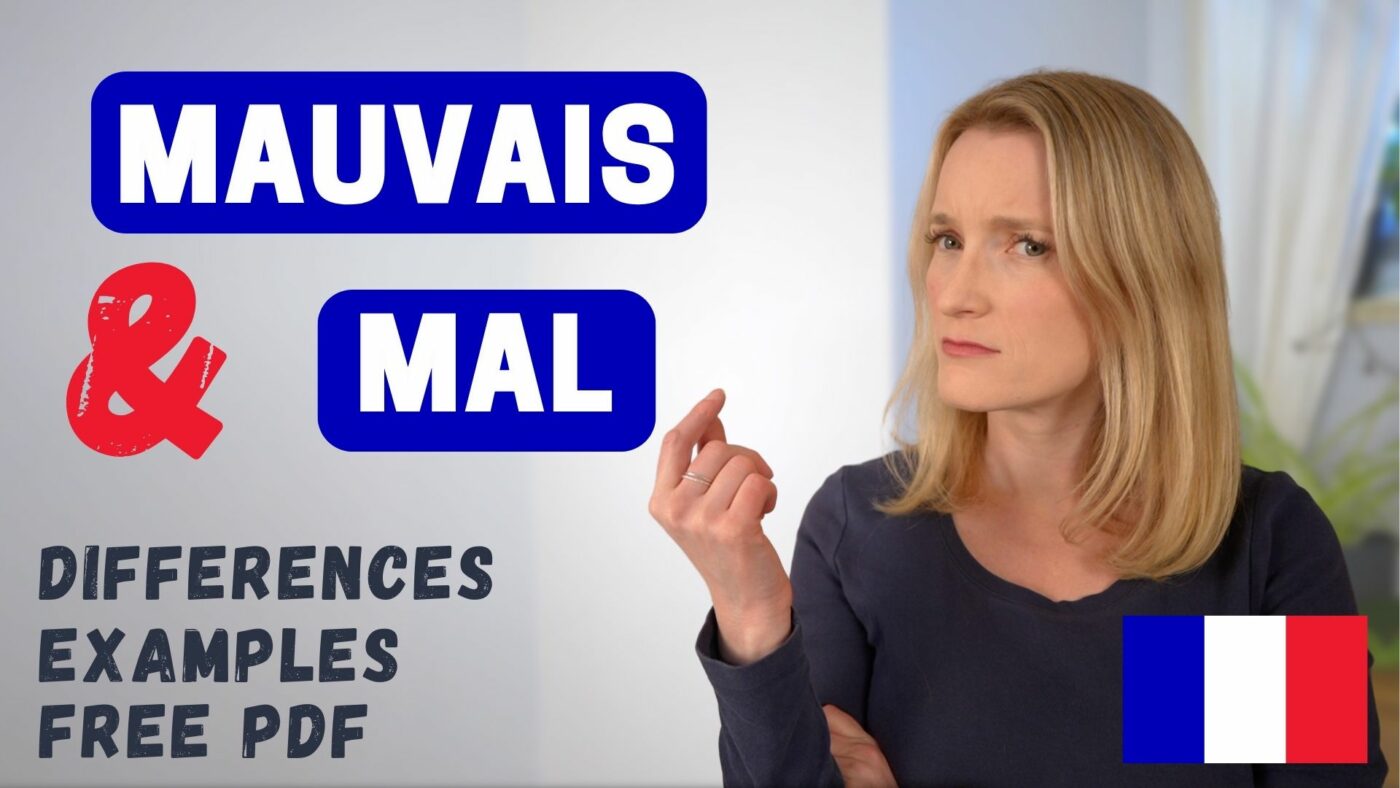Menu
Close
Mal and Mauvais are often mistaken by French learners.
The first issue people encounter is that they can be adjectives, adverbs, and nouns.
The second issue is that they both translate to “bad” in English.
The Free PDF is available at the bottom of this page.
Find more French grammar lessons, including videos and exercises, in my Complete French Grammar Course.

As you can see, most of the translations turn around “Bad”. Let’s see each one in detail with examples.
An adjective refers to a noun or can be used to describe the well-being/state of someone/something.
An adverb refers to a verb.
J’ai un mauvais français = adjective
I have a bad French
Je parle mal français = adverb
I speak French badly
Here we can see that mauvais refers to français on the first line, when mal refers to parle in the second example.
Mauvais as an adjective agrees in gender and number. mauvais doesn’t change in the masculine plural because a double S isn’t possible in French.
Il a de mauvaises notes.
He has bad grades.
C’est une mauvaise façon d’expliquer.
It’s a bad/poor way to explain.
Mal is used as an adjective after être and verbs of well-being.
Mal doesn’t agree in gender and number.
Elle va mal depuis quelques temps.
She has been bad/ill for some time.
C’est mal de mentir.
It’s bad to lie.
Ça sent mauvais ici.
It smells bad here.
Il fait mauvais aujourd’hui.
The weather today is bad.
Tu as mal dormi ?
Did you sleep badly?
Ce livre est mal écrit.
This book is poorly written.
Il s’exprime mal.
He speaks badly.
J’ai pas mal de travail à finir
I have quite a lot of work to finish.
C’est mal de mentir.
It’s bad to lie.
Je n’ai pas mangé le mauvais.
I didn’t eat the bad.
J’ai le mal de mer.
I am seasick.
J’ai le mal du pays.
I am homesick.
Le bien et le mal.
Good and Evil.
I hope you now understand better how to use mal and mauvais in French. Keep practicing and don’t hesitate to leave a comment with an example to try. I will correct you if you want me to.
If you prefer to watch a video lesson, you can watch this video.

One Response
merci beaucoup ma princesse ❤🌹